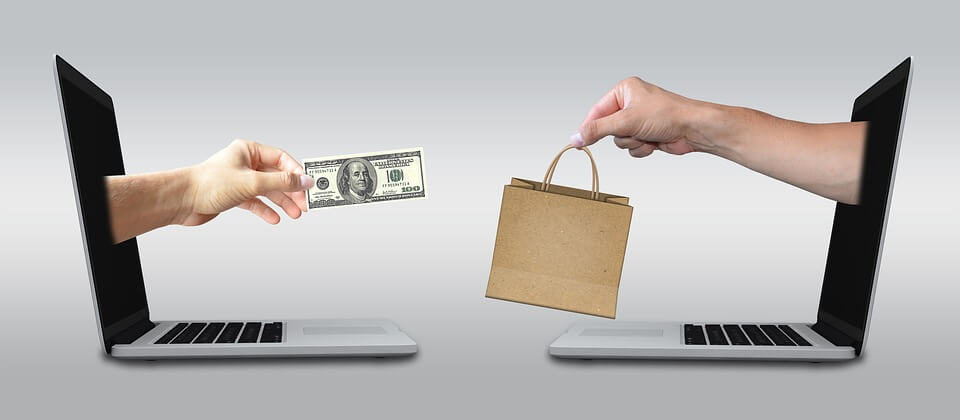For online merchants (and their marketing departments), there are many books and online resources to hone their strategies to convert browsers to buyers. Yet, for brick-and-mortar retailers, from independent boutiques to large retail chains, information resources about Conversion Rate Optimization are difficult to find. The impact of online sales is undeniable, so it’s more important now than ever for retailers to convert in-store traffic to make a purchase.
Historically, chain retailers, supermarkets, department stores, and malls have a number of tactics to attract shoppers into their stores and to spend their money:
- Placing discounted products near the back of the store to draw shoppers to walk through full-price merchandise
- Steering shoppers to the right side of the store as they enter. They, they’ll walk around the perimeter of the store counter-clockwise. This strategy is often used in grocery stores.
- Positioning products like cosmetics at mall entrances to inspire thoughts of happiness and luxury to draw in shoppers
These tactics are losing the luster they once had. The all-important population segment, millennials, are looking for a more engaging shopping experience than endless aisles of clothing. They want their in-store shopping experience (such as product selection and sizing) to be consistent with what they see online.
BOPIS and BORIS
Omnichannel retailers that offer products for sale through pop-up shops, brick-and-mortar retailers, mobile devices, and desktop computers need to break down the barriers between online sales and brick-and-mortar stores. BOPIS (Buy Online, Pickup In-Store) and BORIS (Buy Online, Return In Store) strategies are great ways for retailers to increase in-store traffic and demonstrate their commitment to customer satisfaction.
Almost sixty percent of online shoppers haven’t picked up products at their local retailer because many retailers simply didn’t allow it until the past couple of years. According to TotalRetail, shoppers between the ages of 35 and 49 have the highest propensity to buy online and stop at a retailer to pick up their purchases. Especially during the busy holiday season, BOPIS makes sense. Accepting online returns is another way for retailers to get customers into the store that are familiar with their products and potentially exchange them for similar goods instead of just returning them and buying from another retailer.
Many grocery stores offer curbside order pickup for online buyers. The TotalRetail study shows that shoppers over fifty have the highest propensity to pick up additional products.
Do Retailers Collect Traffic Data, and Do They Use It for Decision Making?
A study by RetailWire and HeadCount found that only 41% of retailers have any idea how much traffic they have passing through their stores on a daily/monthly/annual basis. Only 13% of retailers use this data to inform marketing decisions. For example, how successful their campaigns are at driving foot traffic. Only 30% of retailers do anything with the data, including comparing it on a year-over-year basis.
Compare this to the online world, where traffic and conversion statistics are analyzed many times over. Where the visitor came from, how they found the website and all sorts of analyses. Granted, tracking this sort of information in the physical realm requires technology like sensors, tracking counters, facial recognition, or mobile device trackers, but that technology is widely available.
Retailers should ask shoppers why they didn’t make an in-store purchase and act accordingly.
The HeadCount survey found that nearly 50% of customers that purchased couldn’t find a Customer Associate to help them. Or they didn’t want to wait in line. Offering arrangements like BOPIS pickup locations could diminish lines and increase the utilization of front-line staff. Retail is not dead; it just needs to transform.
The net of this part of the study is physical stores must track the number of visitors to their stores. And they must be proactive about comparing that data against their online promotions, print advertising, and sale events. The report showed that stores tracking traffic hourly against conversions can make better staffing decisions. And that increases customer service levels so shoppers don’t leave empty-handed when they can’t find help.
The RetailWire study shows that brick-and-mortar conversion rates are generally higher than online stores. The exception is a few websites like Amazon. Yet even Amazon, VistaPrint, and Warby Parker are establishing physical stores to increase conversions. The study finds that Conversion Rate Optimization in brick-and-mortar retailers requires better interaction between people. Whereas the online world can be served with AI, algorithms, and chatbots.
Integrate Online and Brick and Mortar Systems
Some of the largest retailers still cling to the idea that physical stores and online sales should have separate systems, P&L reporting, and management. Retailers like Wal-Mart, Target, and Bed Bath and Beyond that embrace digital transformation and “bricks and clicks” business models tend to be the most successful. Shoppers of all ages, from millennials to baby boomers, are looking for more engaging shopping experiences. In the physical world, retailers like Lululemon are offering in-store yoga classes and other experiential shopping experiences. Product demonstrations are a great place to start. For example, in-store cooking classes or fashion shows are examples of how to get shoppers from their devices. Doing so gets shoppers back into their local retail establishments.
Editor’s Note: This post was written by Mark Burdon, one of the top marketing writers in the nDash community. To learn more about Mark — or to have him write for your brand — check out his nDash profile page.
